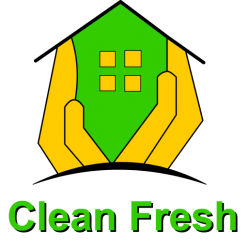Dealing with tough stains on your carpets can be a daunting task, especially if you’re unsure of the best methods to tackle them. Whether it’s a wine spill, stubborn pet stain, or deeply embedded dirt, it’s important to address the stains promptly and effectively. In this blog post, we will guide you through the step-by-step process of removing tough stains from your carpets, helping you restore their pristine condition and keep them looking their best.
- Act Quickly: The key to successfully removing tough stains is to act promptly. The longer a stain sits on your carpet, the harder it becomes to remove. As soon as you notice a stain, blot it gently with a clean cloth or paper towel to remove any excess liquid or debris. Avoid rubbing the stain vigorously, as this can push it deeper into the carpet fibers.
- Identify the Stain Type: Different stains require different cleaning techniques, so it’s essential to identify the type of stain you’re dealing with. Common carpet stains include food and beverage spills, pet stains, ink, grease, and mud. Once you know the stain type, you can choose the appropriate cleaning method and products for effective stain removal.
- Pre-test in a Hidden Area: Before applying any cleaning solution to the stained area, it’s crucial to conduct a pre-test in an inconspicuous area of the carpet. This test helps ensure that the cleaning solution doesn’t cause any discoloration or damage to the carpet fibers. Follow the instructions provided with the cleaning solution and allow it to sit for the recommended time before inspecting the test area.
- Select the Right Cleaning Solution: There are numerous carpet cleaning solutions available, but it’s important to choose one that is suitable for the specific stain and your carpet type. Here are a few common homemade solutions you can try:
- For food and beverage stains: Mix a solution of mild dish soap and warm water.
- For pet stains: Use an enzyme-based pet stain remover to break down organic matter and neutralize odors.
- For ink stains: Apply isopropyl alcohol to a clean cloth and blot the stain gently.
- For grease stains: Sprinkle baking soda or cornstarch on the stain to absorb the grease, then vacuum it up before treating the remaining stain with a grease-fighting dish soap solution.
- For mud stains: Allow the mud to dry completely, then vacuum it up. Treat any remaining stain with a mixture of dish soap and warm water.
- Apply the Cleaning Solution: Dampen a clean cloth or sponge with the appropriate cleaning solution and gently blot the stained area. Avoid scrubbing, as it can damage the carpet fibers. Start from the outer edges of the stain and work your way toward the center to prevent spreading the stain further. Allow the cleaning solution to sit for a few minutes to break down the stain.
- Blot and Rinse: After applying the cleaning solution, use a clean, damp cloth to blot the stain gently. Repeat this process several times until the stain is lifted. Avoid excessive moisture, as it can lead to carpet damage or mold growth. Once the stain is removed, use a separate cloth dampened with plain water to rinse the area and remove any residue from the cleaning solution.
- Dry and Fluff: After removing the stain, blot the treated area with a dry cloth to absorb excess moisture. Allow the carpet to air dry completely before walking on it. Once dry, use a vacuum cleaner with a brush attachment to fluff up the carpet fibers and restore their appearance.
Conclusion: With the right approach and prompt action, you can successfully remove tough stains from your carpets. By following the step-by-step process outlined in this guide, you can effectively tackle various

